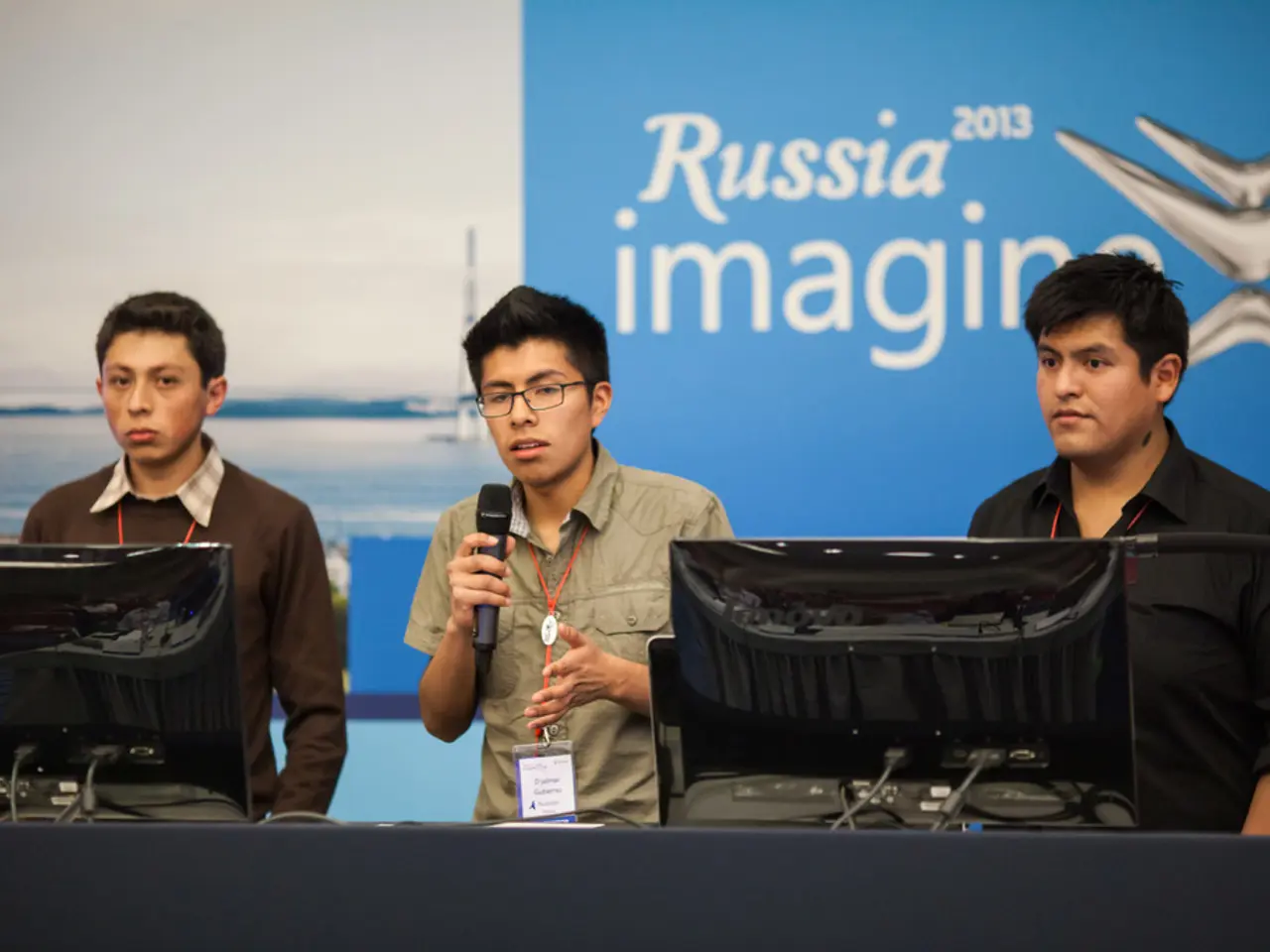Summit Themes Arising from Alaska: Insights for the Trump-Putin Meeting
In a significant turn of events, Russian President Vladimir Putin met with US President Donald Trump in Anchorage, Alaska, to discuss the ongoing conflict between Russia and Ukraine.
During the summit, Putin emphasized the need to address the root causes of the conflict, rather than focusing on a ceasefire as a precondition for peace talks. This stance contradicts the position of many Western leaders, including the NATO allies, who view a ceasefire as a crucial step towards peace.
Russia's specific demands in the negotiations primarily include significant territorial concessions from Ukraine. Putin is expected to insist on these concessions as part of his negotiation strategy, aiming to portray Ukraine as the obstacle to peace and to pressure Kyiv into making compromises under the guise of seeking peace and security guarantees.
Simultaneously, Russia continues its aggressive attacks on Ukrainian cities, using mass drone strikes as leverage while also offering economic incentives directly to Washington. This strategy, combining military pressure, economic inducements, and diplomatic manipulation, has raised concerns among Ukraine and its allies.
Ukraine, represented by President Volodymyr Zelensky, is expected to be absent from the talks, highlighting Kyiv's reluctance or outright rejection of negotiations that do not include it as a full party or that demand unacceptable territorial concessions. Western observers view Putin's approach as a strategic maneuver designed to shift blame onto Ukraine for the failure of peace efforts, thereby justifying pressure and aid cuts against Kyiv.
The war between Russia and Ukraine continues, with daily clashes, Russian troop advancements, and Ukrainian territory loss. Civilian infrastructure and residential buildings in cities are also frequently damaged in Ukraine due to Russian attacks. The damage and casualties from Ukraine's drone attacks, while not insignificant, are dwarfed by the heavy destruction and many deaths and injuries caused by Russian attacks in Ukraine.
Trump, despite the clear requests of NATO allies and Kyiv, sided with Russia's stance that a ceasefire is not necessary for peace talks. This position could put him at odds with the West, which worries that any deal struck without Ukraine's genuine agreement risks rewarding Russian aggression and undermining Ukraine’s sovereignty.
The summit concluded with Russia feeling relieved that Trump did not set new ultimatums or issue new threats of sanctions. Trump confirmed that a ceasefire is not the immediate goal, but rather a peace agreement, and that this agreement should be achieved immediately. Putin presented numerous demands, including Ukraine's renunciation of NATO membership, the preservation of the rights of the Russian-speaking population, and an end to Western military buildup in neighboring countries.
Trump, before his inauguration, claimed he could end the war in Ukraine within 24 hours, a statement he later said was sarcastic. However, the ongoing conflict and the recent summit have raised questions about the possibility of a peaceful resolution to the crisis.
[1] Sources: BBC News, The Washington Post, The New York Times, CNN.
- The ongoing dispute between Russia and Ukraine, steeped in the context of war-and-conflicts, is marked by political tensions, with conflicting stances on a ceasefire being a focal point in negotiations.
- The recent summit between Russian President Vladimir Putin and US President Donald Trump underscored the complexities of the general-news landscape, as both leaders presented conflicting views on the necessity of a ceasefire for peace talks.








